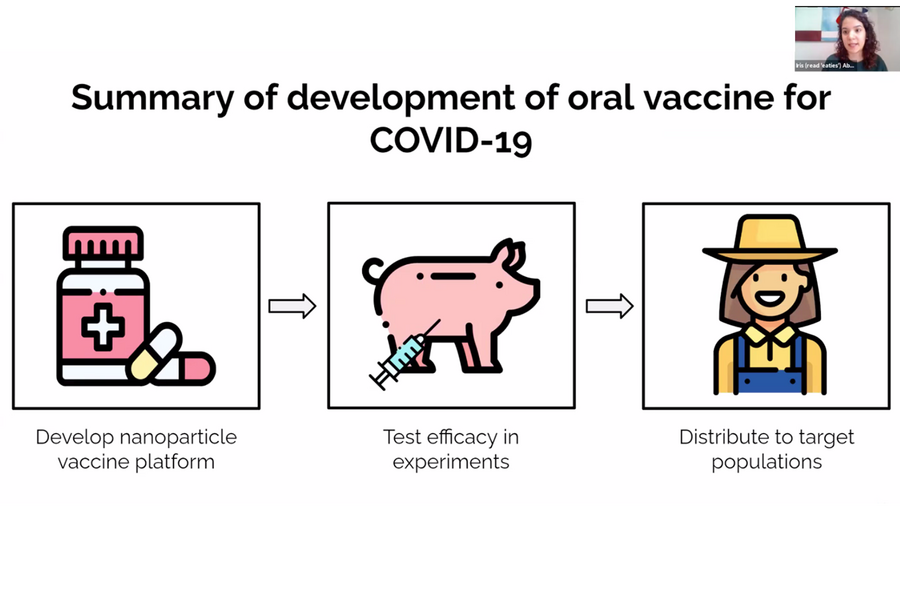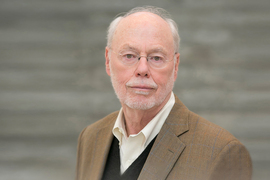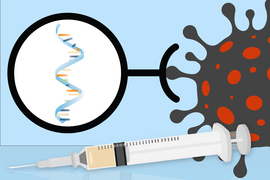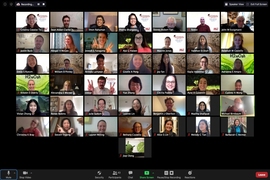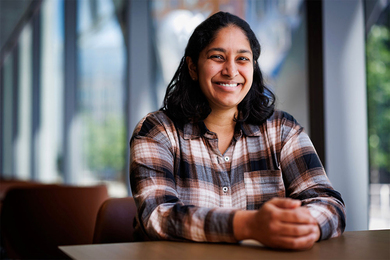Last fall, seniors in the MIT Department of Biological Engineering (BE) took on the most relevant of all possible design challenges — the Covid-19 pandemic. The capstone design class in the Course 20 major, class 20.380 (Biological Engineering Design) has a different theme every semester, and in September there was little doubt about this fall’s topic — Addressing the Pandemic with BE. “We weren't sure how students would respond. Would they be exhausted by Covid? Instead, students leapt at the chance to apply their skills to such an immediate problem,” says Professor Angela Koehler, a member of the teaching team.
“When the pandemic began, as Course 20s many of us felt helpless,” senior Afeefah Khazi-Syed observes. “This was supposed to be our area of expertise, and yet we were all stuck in quarantine. 20.380 helped us think about how the skills we’ve developed through the years can lead to much-needed innovation. It was rewarding to work on a project that is so directly relevant to the current situation.”
Searching for solutions based in biology
Teams worked to apply their knowledge of biology and engineering skills to conceive of approaches to different aspects of the problem. Two teams designed diagnostic tests, one to measure infectiousness and one to detect airborne viruses in classrooms. Other teams designed algorithms to optimize pooled testing, a therapeutic molecule that could have relevance for other coronaviruses beyond Covid-19, and new forms of vaccines — a time-release booster shot and an oral vaccine.
“As we brainstormed and developed our idea for a more accessible vaccine platform, it was unreal to see how scientists across the world were publishing papers on the matter and developing oral vaccines that were similar to our project. It showed us we were addressing the right problems and we weren’t alone in doing so. Never had my course load felt so tied with the current needs of the world,” says senior Iris Abrahantes Morales.
Teams could address any pandemic, so Team TB Diagnostics chose another global problem. “TB was an obvious choice after we realized that it kills more people annually than Covid-19 ever has. Nothing could have made us more sympathetic to the nightmare of living around rampant TB than living through a pandemic ourselves," says senior Connor Sweeney.
Learning from experts
Even in a remote learning environment, the class drew heavily on the expertise of local professionals and academics in Cambridge and Boston, Massachusetts, along with the added mentoring of MIT alumni across the country. Student teams were matched with external “customers,” who provided perspective on factors that realistic designs would require. These advisors included people who would be directly affected, like MIT Professor John Essigmann and Elizabeth Choe, head of house and graduate resident advisor at Simmons Hall, who are eager to have detection systems like Team Capio’s. Other “customers” work professionally on these same problems, like Brendan Manning at MIT spinout Sherlock Biosciences; Hok Hei Tam PhD '18 and John Casey PhD '15 of Flagship Pioneering; Matthew Carney SM '15, PhD '20 of Open Standard Respirator; and Chris Pirie PhD '11 of HDT Bio.
Guest speakers included Dan Barouch of the Ragon Institute of MGH, MIT and Havard and Beth Israel Deaconess Medical Center, who spoke from his hospital office about his lab’s work developing a Covid-19 vaccine. MIT Professor Peko Hosoi explained the modeling behind the return to campus residential life on campus, inspiring the team building a detector for airborne viruses. MIT Department of Urban Studies and Planning Professor Mariana Arcaya spoke on the social factors of health, and several teams incorporated detailed storytelling about who might use their products, considering economic and geographical inequities. Pirie commented after ZorroBio’s presentation on oral vaccines, “I really appreciated the persona development. This is really consistent with the customer-centric MIT entrepreneurial mode, so that's really inspiring.” Students also heard from Institute Professor Robert Langer on intellectual property, Claire Duvallet PhD '19 on wastewater epidemiology from MIT spinout Biobot Analytics, and others.
Reasoning and communicating their ideas
The final deliverables in the communication-intensive class were a presentation to customers and guests, as well as written grant proposals including results from computational models. Building on those pieces, teams can deepen their designs and even run pilot experiments in 20.381 (Biological Engineering Design II), an optional follow-on class offered in the spring that takes advantage of the BE/chemical engineering Huang-Hobbs BioMaker Space.
BioMaker Space director and instructor Justin Buck regularly asked students to make engineering estimates around questions such as: How many virus particles are in a room with an infected person? How long will it take for 50 percent of the country to be exposed? How big are the U.S. and global markets for Covid vaccines? “I wanted students to see the importance of engineering estimates in guiding and benchmarking their designs,” Buck says.
The full instructional team consisted of professors Jim Collins and Angela Koehler, instructors Justin Buck and Sean Clarke, and teaching assistants Mo Toure and Bianca Lepe.
Senior Margaret Zhang says, "My favorite part of the class was watching all of the teams present on the last day. Although we're just seniors in college, I felt like the work we had done this semester could really make a difference, and that is a great feeling."
